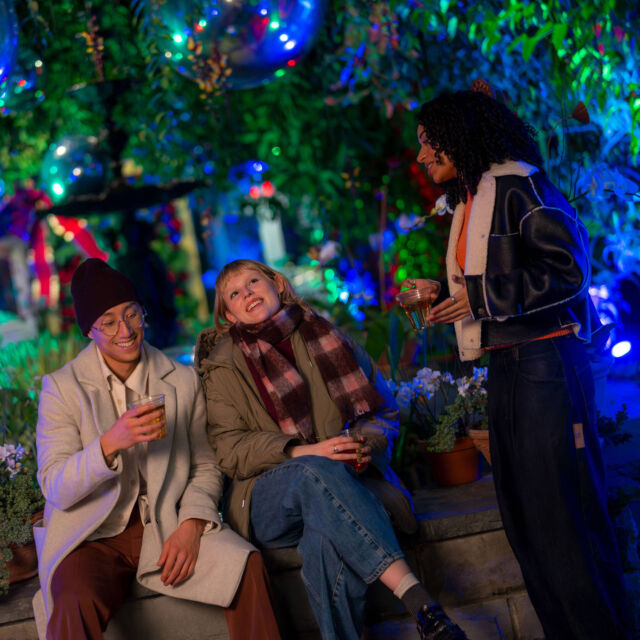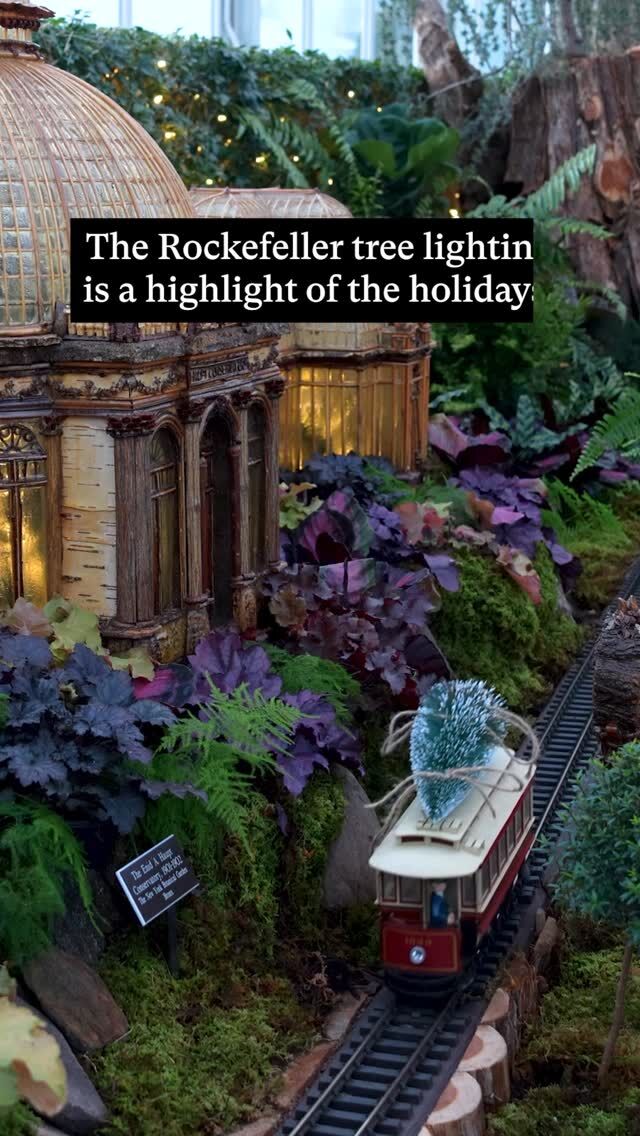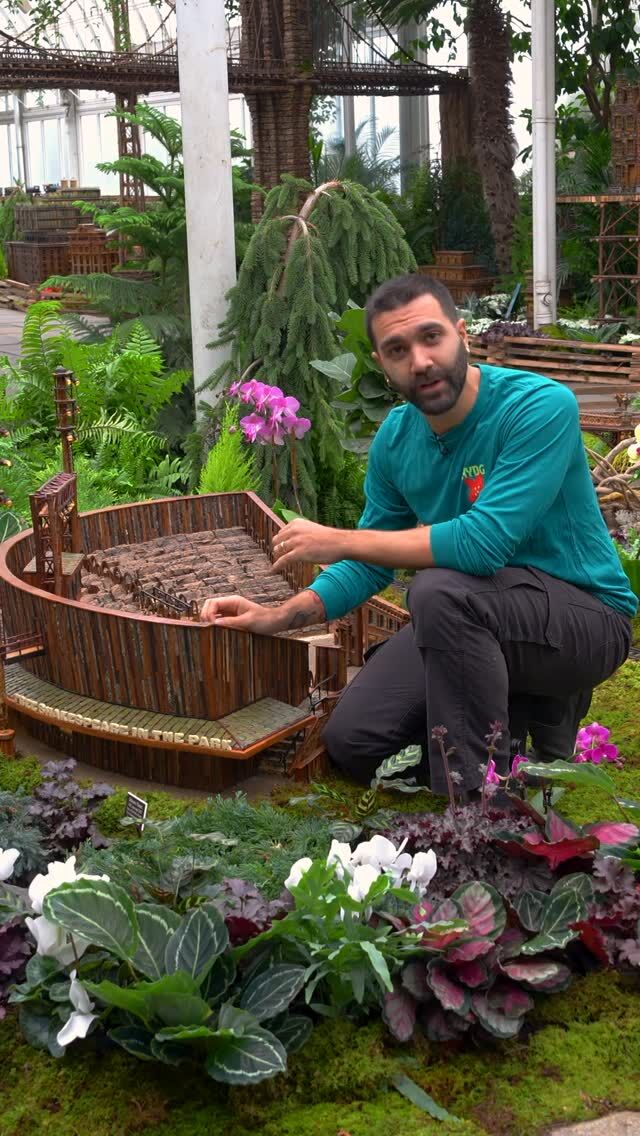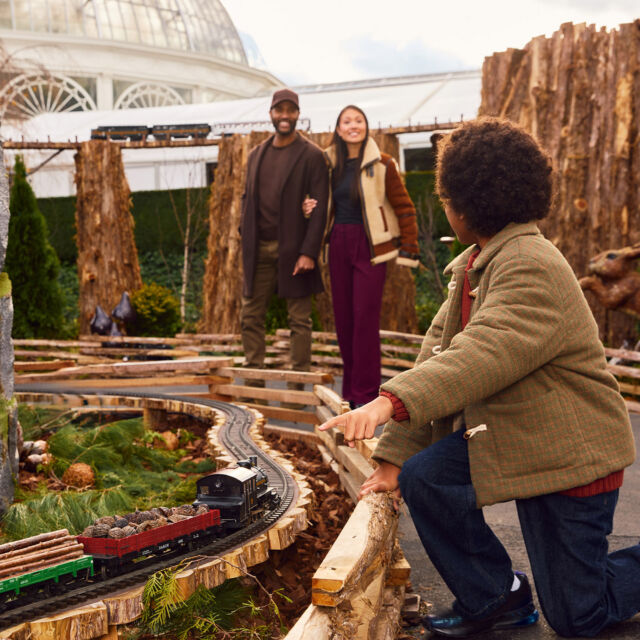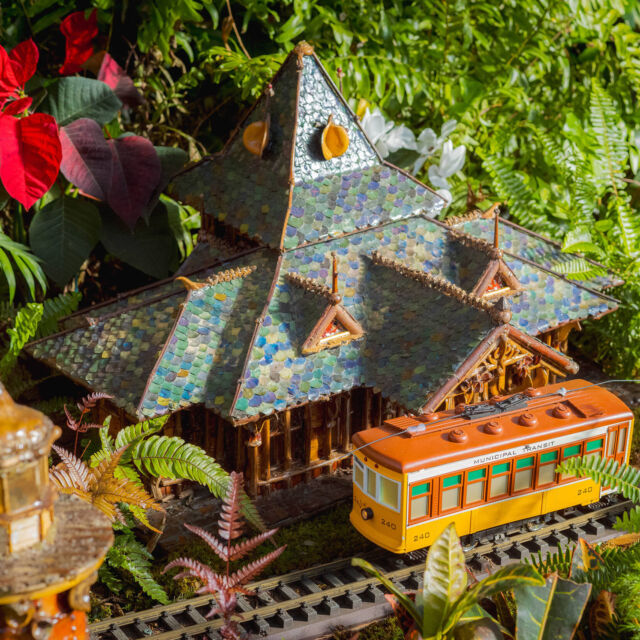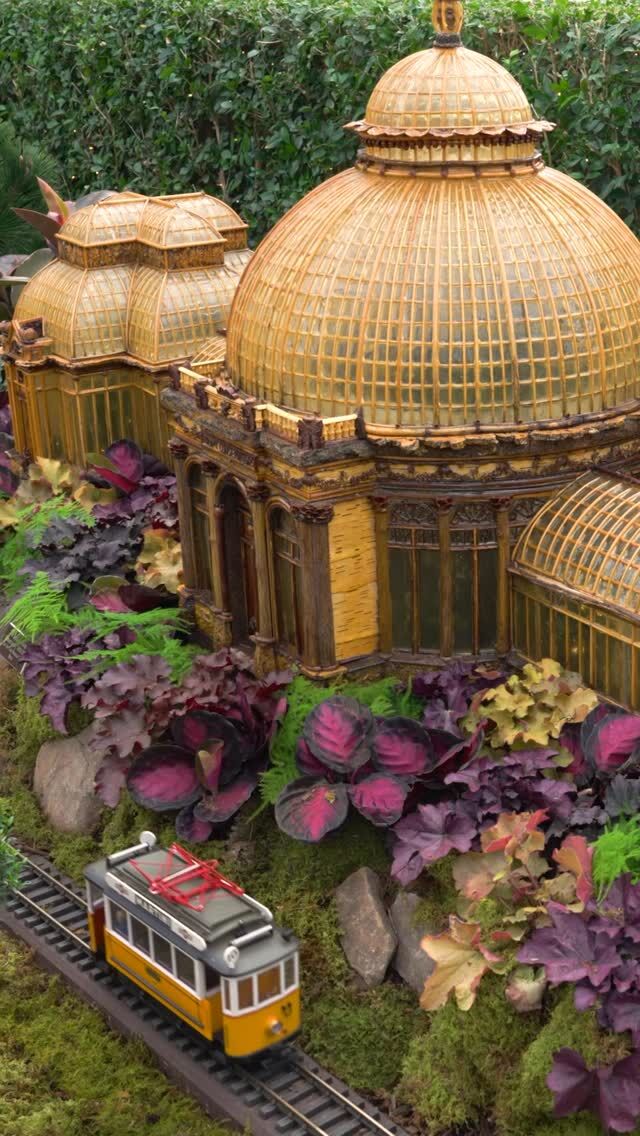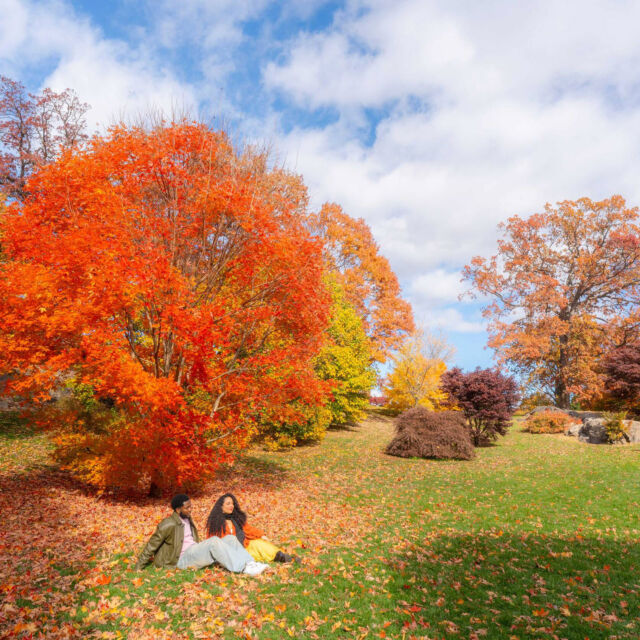Battling Beech Leaf Disease: How NYBG Is Using Horticulture and Science to Protect Stately Trees
John Zeiger is the Manager of the Thain Family Forest; Vincent Galatolo is the Director of Plant Health; and Aleca Borsuk is an Assistant Curator at the New York Botanical Garden.
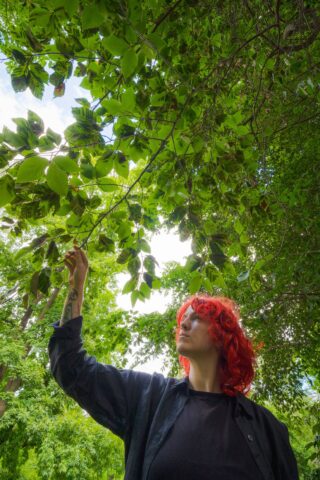
Melissa Finley, Thain Curator of Woody Plants, monitors an infected tree.
Tree diseases can be devastating. Chestnut blight largely eliminated American chestnuts from the eastern forest more than a century ago, and in the last decade ash trees have likewise been decimated from emerald ash borer beetles. A new threat—beech leaf disease (BLD)—endangers American and European beech, elegant trees with smooth gray bark and abundant fall nuts. Luckily, NYBG horticulturists and scientists are hard at work trying to save beech trees in the Garden’s arboretum and Thain Family Forest, restoring affected natural areas, and conducting research that may lead to solutions.
Beech leaf disease likely affects most of the beech on NYBG’s grounds and is spreading rapidly throughout the northeastern United States. During the spring or summer, look up into the beech canopy and you will see dark green coloration between the veins of the leaves. This contrasts with the lighter green of healthy leaves. This discoloration is caused by nematodes, microscopic worms that enter the budding leaves of beech trees and eat them from the inside. The New York Department of Environmental Conservation expects that many infected trees will die in less than 10 years.
At NYBG, we are purposeful plant people, and we are fighting to protect both the beech here on the grounds and the larger forested landscape.
On our grounds, we have specimen beech trees that are a vital part of the living plant collections, and we are using a variety of means to improve their health. Some of these methods improve the natural immune response of the beech, with the goal of helping the tree fight off the nematodes on their own. Other treatments target the nematodes, reducing their numbers.
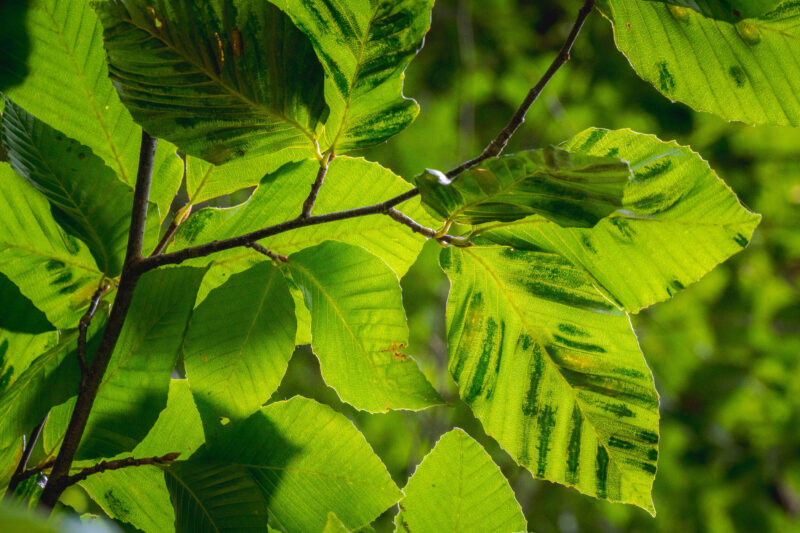
Beech leaf disease causes distinct banding to occur between leaf veins.
While we can treat many of the planted beech specimens in our living collections, we cannot treat every wild beech tree in our natural areas, including the 50-acre old growth Thain Family Forest at the heart of the Garden. Instead, we selectively treat some beech (so that they will remain a part of the natural ecosystem into the future) but expect that most of our native beech trees will die. This is unfortunate, but it does create an opportunity to increase the biodiversity of the Forest.
Since the native plants of the Thain Family Forest have been studied for nearly 130 years, we are aware of how the biodiversity of the Forest has changed over time. We are exploring the possible reintroduction of some plant species that once thrived in the Forest but are now gone. The loss of some groups of beech will create sunny patches in the forest understory—perfect locations for the re-establishment of extirpated native plants, such as red columbine and zig-zag goldenrod. Therefore, even as we lose beech, we can still increase the Forest’s biodiversity.
At a regional level, NYBG staff are working with other land stewards through the BLD Coalition, a working group of local land management professionals, to protect forests impacted by beech leaf disease. Since it will be impossible to save every individual beech tree in our regional forests, the focus of the coalition’s work has been to promote the growth of new native trees in areas where canopy trees are dying from disease.
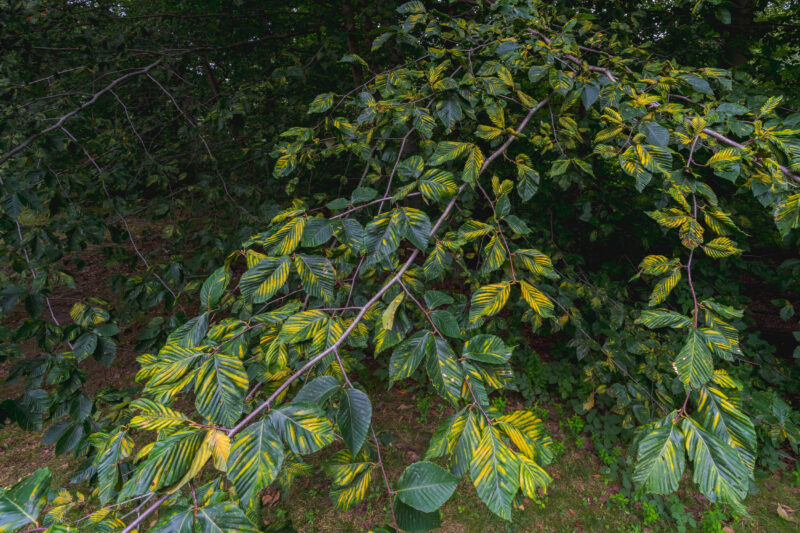
An example of a heavily infected beech tree
NYBG’s scientists are looking at this problem with an even wider lens. Research at the Garden is currently investigating how the nematodes affect the interior structure of the beech leaves and how these infected leaves interact with different wavelengths of sunlight. This information may help us understand disease spread regionally, by allowing us to pinpoint diseased trees from aerial imagery.
The climate and biodiversity crises are having a profound impact on natural ecosystems everywhere. Experts from a range of disciplines must work together to develop solutions. We hope that this collaboration between NYBG’s scientists and horticulturists will provide land managers across our region with tools that will help them address BLD before American beech goes the way of American chestnut.
SUBSCRIBE
Enter your email address to subscribe to this blog and receive updates on new posts.


